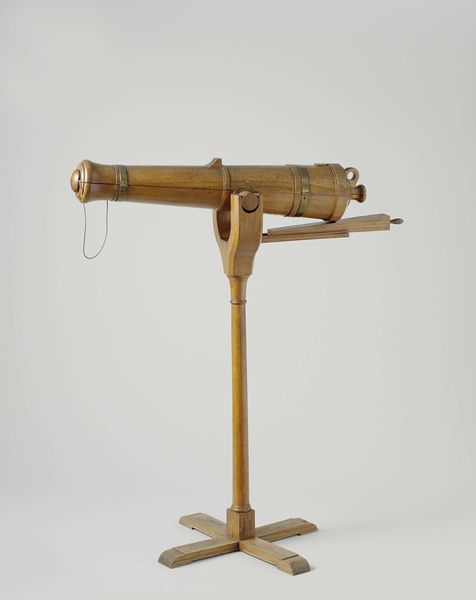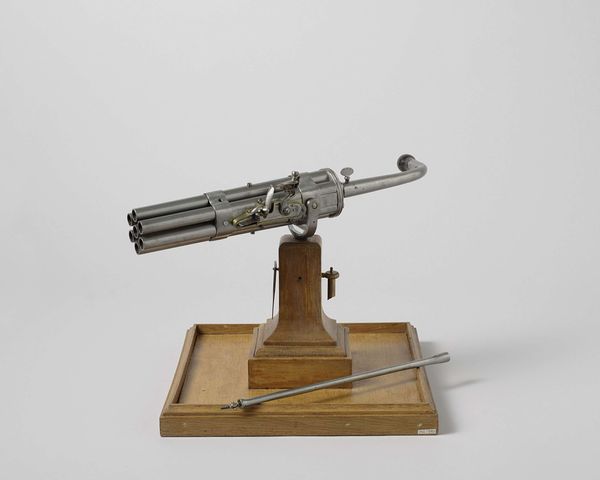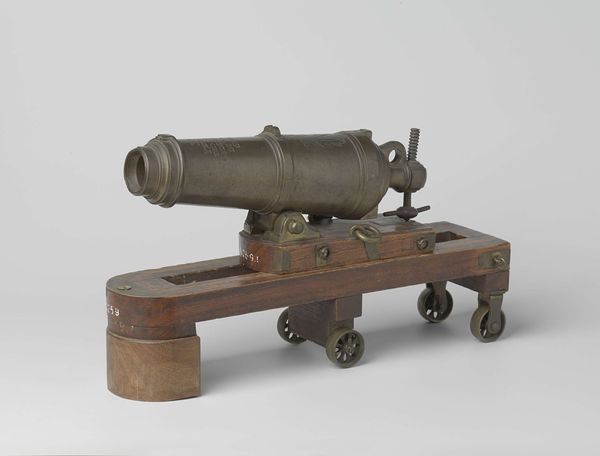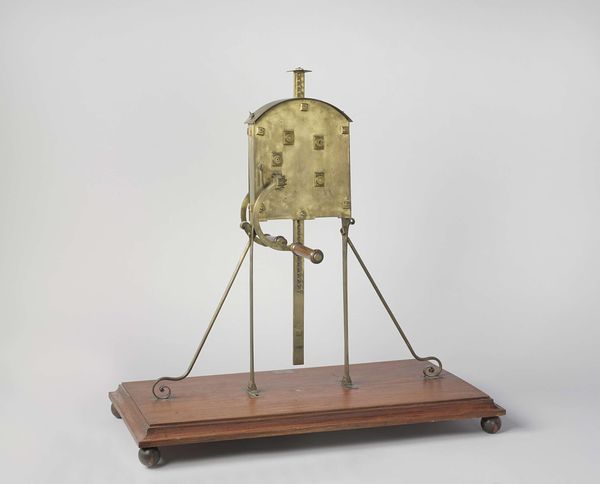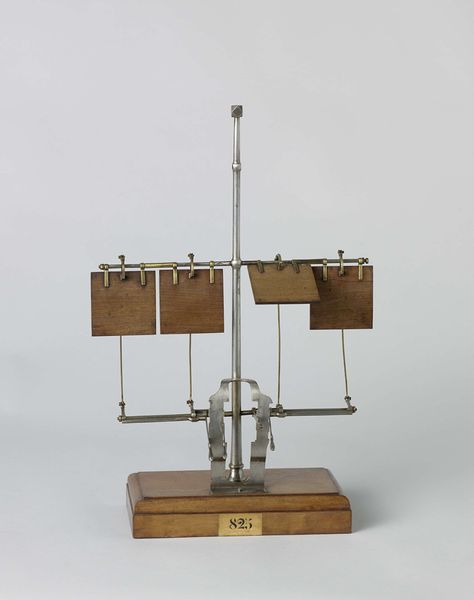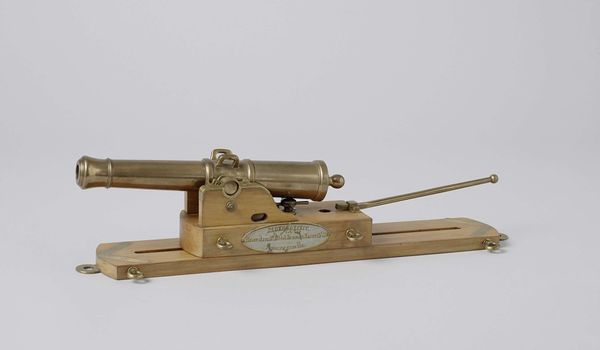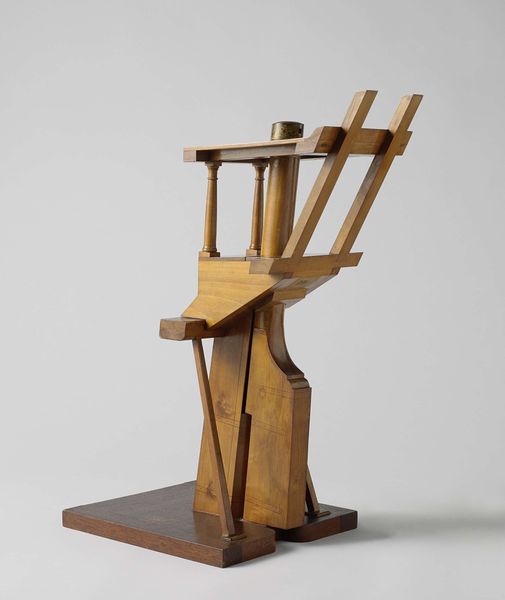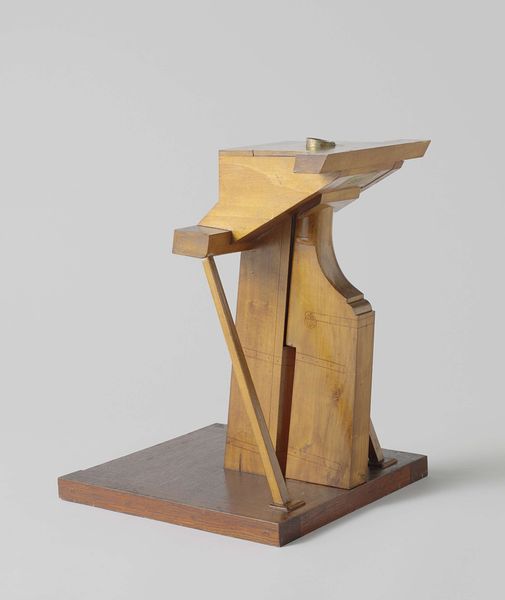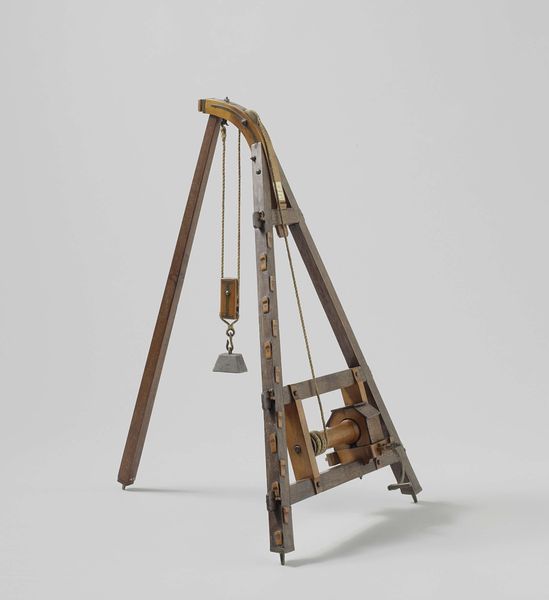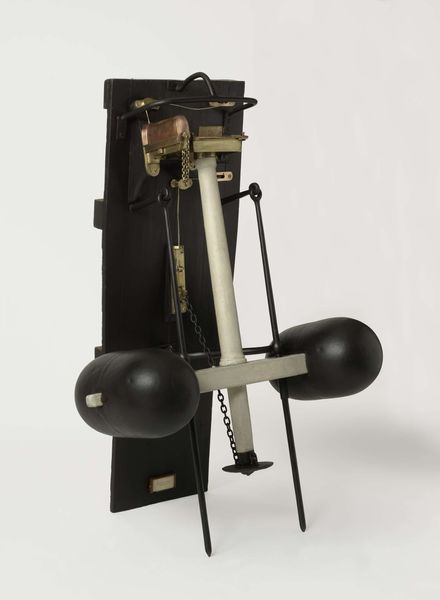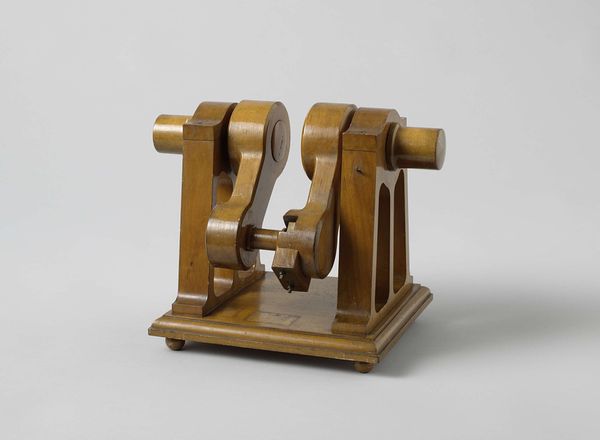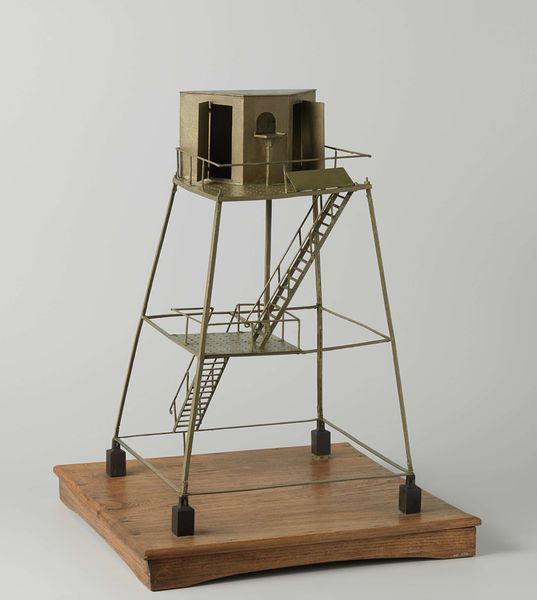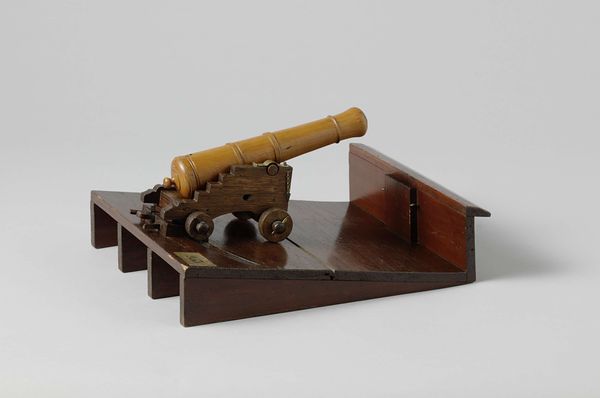
sculpture, wood
#
classical-realism
#
sculpture
#
wood
#
history-painting
Dimensions: height 128.5 cm, width 82.5 cm, depth 22.8 cm, calibre 52 mm
Copyright: Rijks Museum: Open Domain
Curator: Let’s consider this fascinating object: a model of a 30-pounder gun, crafted around 1835, presumably by someone associated with the Rijkswerf Amsterdam, rendered meticulously in wood. Editor: My initial impression is that it's simultaneously imposing and playful. There’s a tension in seeing such a powerful weapon reduced to a wooden replica, almost like a child’s toy. Curator: Exactly! The reduction in scale transforms the object's semiotic weight. The classical-realist style highlights the details with precision. Observe the crafted rings and the stand’s column. Each part suggests attention to recreating the exact forms while negating the brutal functionality of a real cannon. Editor: Indeed, and the wooden medium changes everything. We see not cold, brutal iron, but the warmth and relative softness of wood. The cannon, which traditionally symbolized aggression, becomes an almost domesticated symbol. Curator: Yes, the artist is subverting the symbolic order! It is also worth considering how models like these served didactic and decorative purposes, instructing in warfare while also functioning as trophies or gentlemanly pursuits. Think of the cultural anxieties such weaponry held. Editor: Right, consider what this form may have represented to the patron: national strength, scientific progress in ballistics, even the anxieties tied to the ongoing, global balance of colonial power and conflicts. I see layers of memory embedded here, of wars and technologies. Curator: And in turning to form, one also acknowledges the interplay between the solid mass of the barrel against the delicate and architectural scaffolding of the support stand. It's an exercise in creating balanced forms, despite the violent potential implied in the symbol. Editor: In looking more carefully at its symbolism, the wood provides us with the key—turning this model of war into a symbol not of violence, but rather a physical reflection of broader philosophical conflicts of that era. Curator: It makes one wonder about the specific person who fashioned this replica, the level of devotion to craft inherent to model making, and what their aims might have been beyond representation of pure structure and functionality. Editor: It leaves a viewer contemplative, challenged to unravel meaning residing in material, shape and representation all in concert. Thank you!
Comments
No comments
Be the first to comment and join the conversation on the ultimate creative platform.
